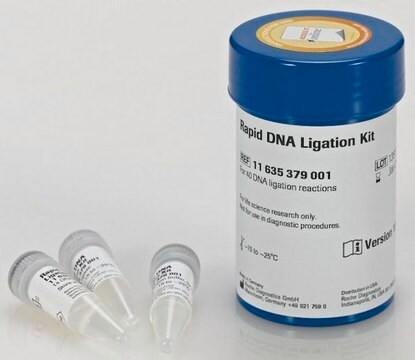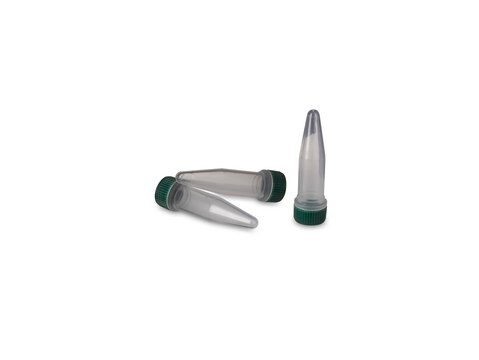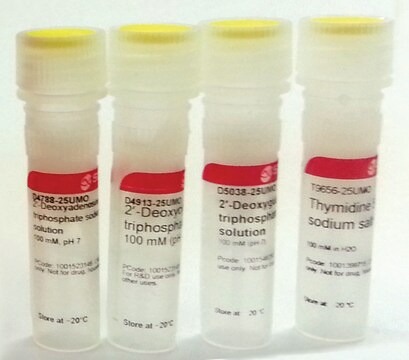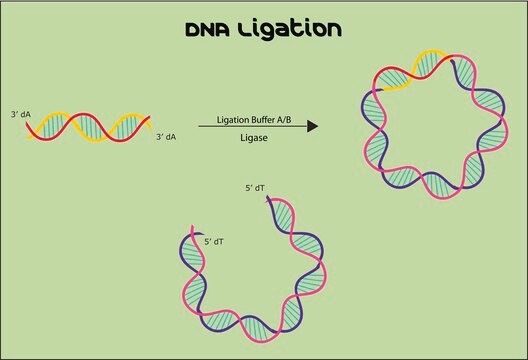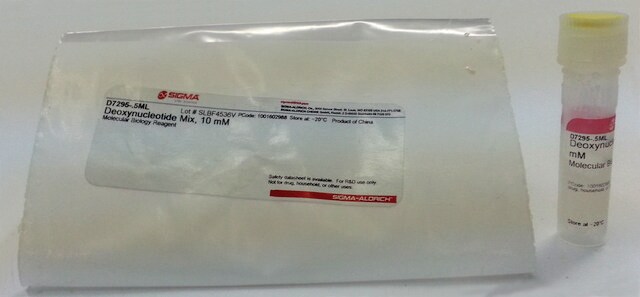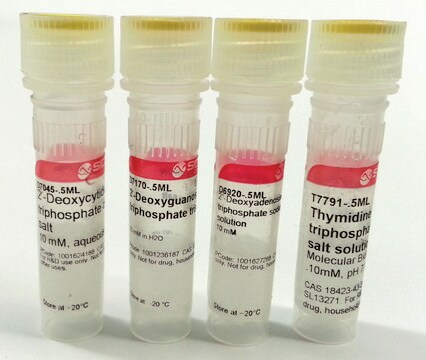Wichtige Dokumente
D2886
DNA-Ligase aus T4-infizierten E. coli
buffered aqueous glycerol solution
Synonym(e):
Polydeoxyribonucleotid-Synthase, Polynucleotid-Ligase, T4 DNA-Ligase
About This Item
Empfohlene Produkte
Qualität
Molecular Biology
for molecular biology
Form
buffered aqueous glycerol solution
Spezifische Aktivität
4,000 U/mL
Mol-Gew.
68 kDa
UniProt-Hinterlegungsnummer
Lagertemp.
−20°C
Angaben zum Gen
bacteriophage T4 ... 30(1258680)
Suchen Sie nach ähnlichen Produkten? Aufrufen Leitfaden zum Produktvergleich
Verwandte Kategorien
Anwendung
- Ligation of blunt ended or cohesive DNA fragments
- Ligation of cloning vector and restriction insert fragments
- Seal nicks in double stranded DNA and RNA or DNA/RNA hybrids
- Couple RNA single strands by bridging oligonucleotide adapters
Biochem./physiol. Wirkung
Komponenten
Einheitendefinition
Sonstige Hinweise
Ähnliches Produkt
Signalwort
Danger
H-Sätze
P-Sätze
Gefahreneinstufungen
Resp. Sens. 1
Lagerklassenschlüssel
10 - Combustible liquids
WGK
WGK 1
Flammpunkt (°F)
Not applicable
Flammpunkt (°C)
Not applicable
Persönliche Schutzausrüstung
Eyeshields, Gloves, multi-purpose combination respirator cartridge (US)
Hier finden Sie alle aktuellen Versionen:
Besitzen Sie dieses Produkt bereits?
In der Dokumentenbibliothek finden Sie die Dokumentation zu den Produkten, die Sie kürzlich erworben haben.
Kunden haben sich ebenfalls angesehen
Protokolle
T4 DNA Ligase catalyzes the formation of a phosphodiester bond between the terminal 5′ phosphate and a 3′ hydroxyl groups of duplex DNA or RNA. The enzyme efficiently joins blunt and cohesive ends and repairs single-stranded nicks in duplex DNA, RNA or DNA/RNA hybrids.
Unser Team von Wissenschaftlern verfügt über Erfahrung in allen Forschungsbereichen einschließlich Life Science, Materialwissenschaften, chemischer Synthese, Chromatographie, Analytik und vielen mehr..
Setzen Sie sich mit dem technischen Dienst in Verbindung.
